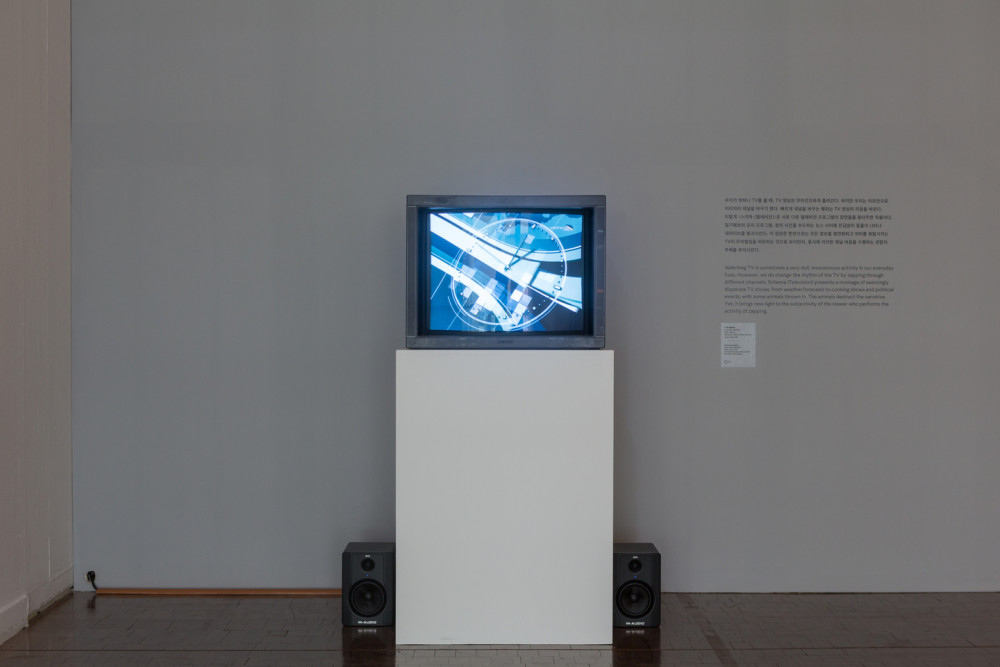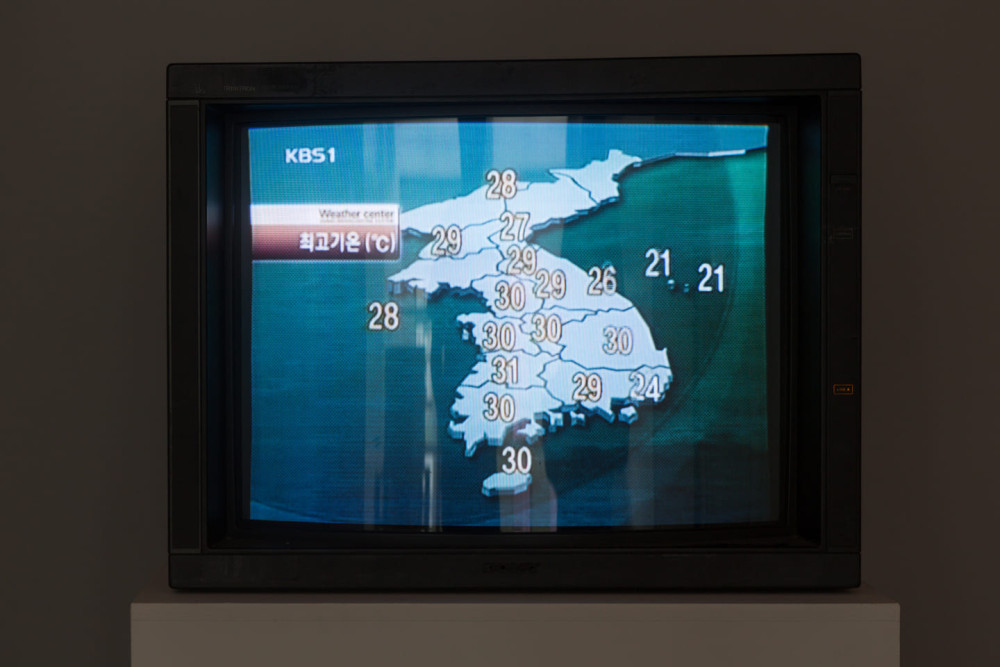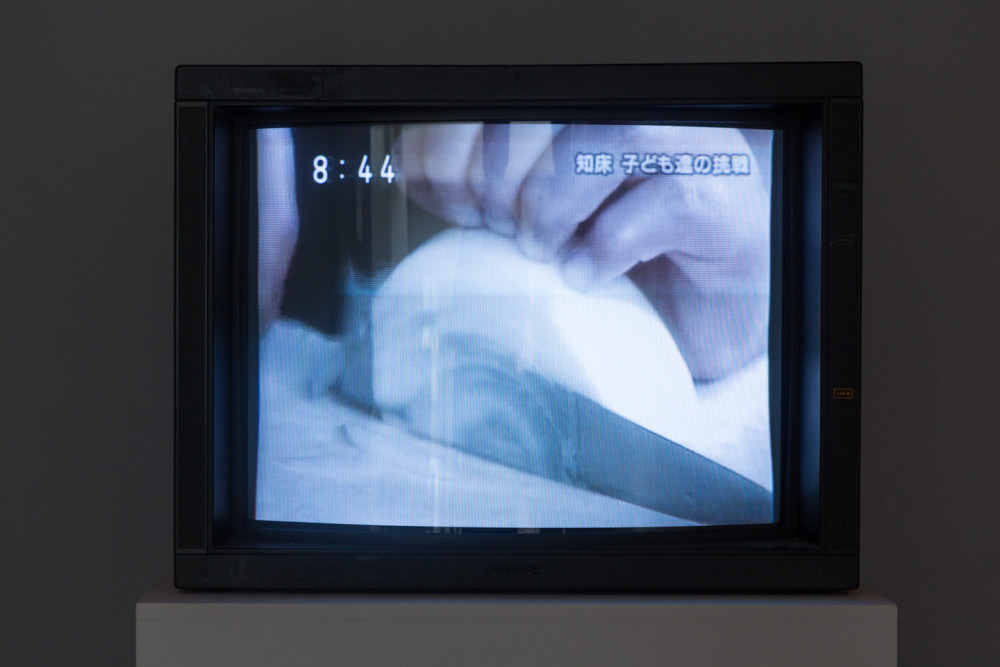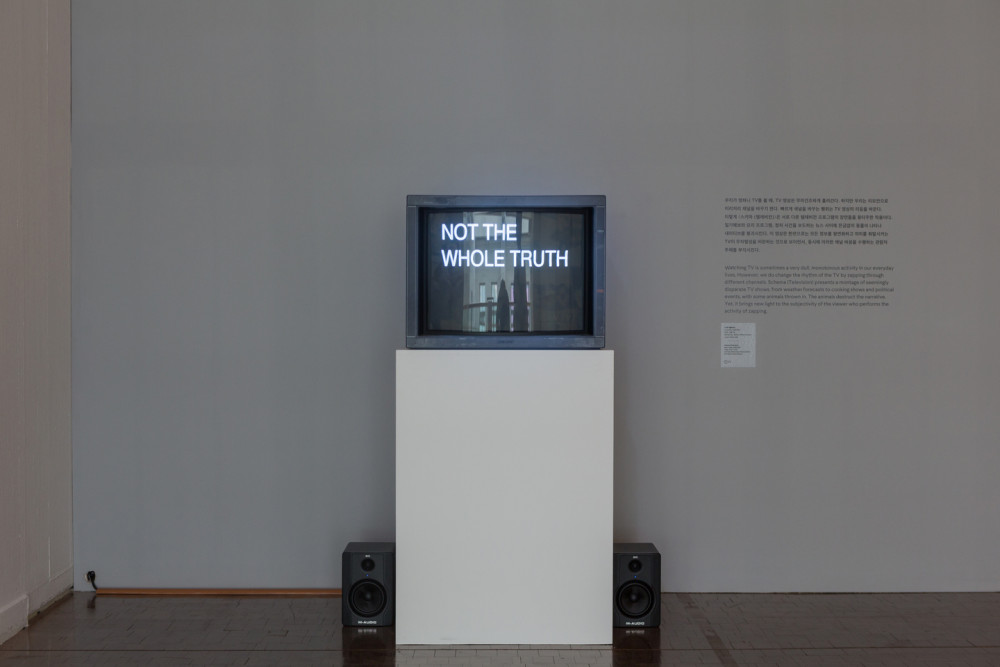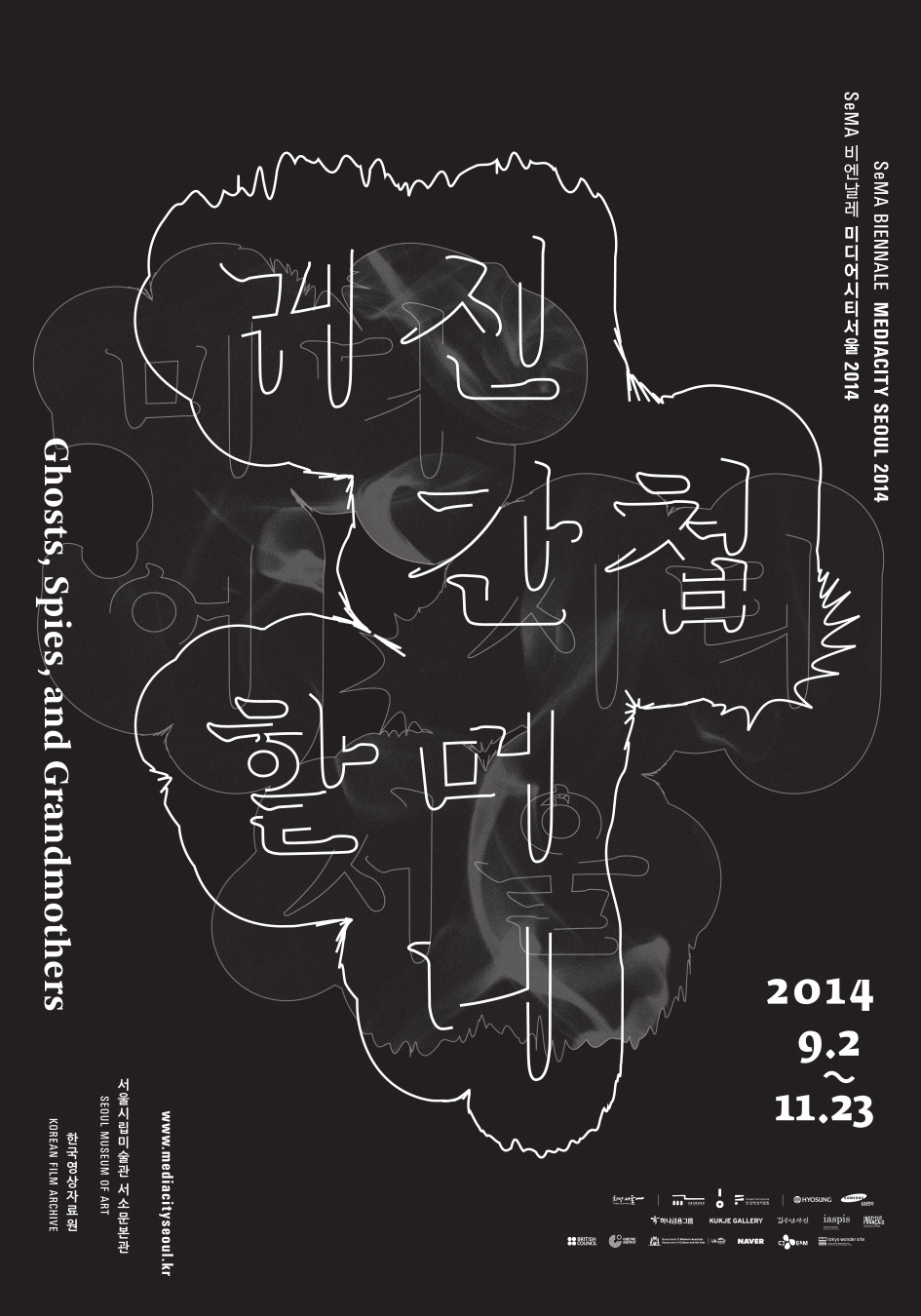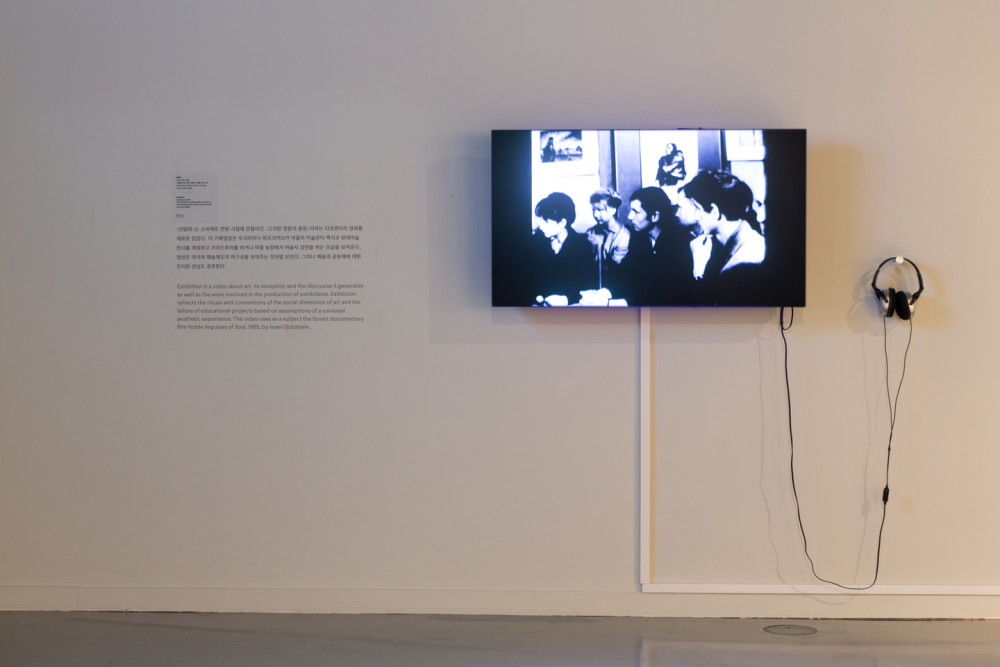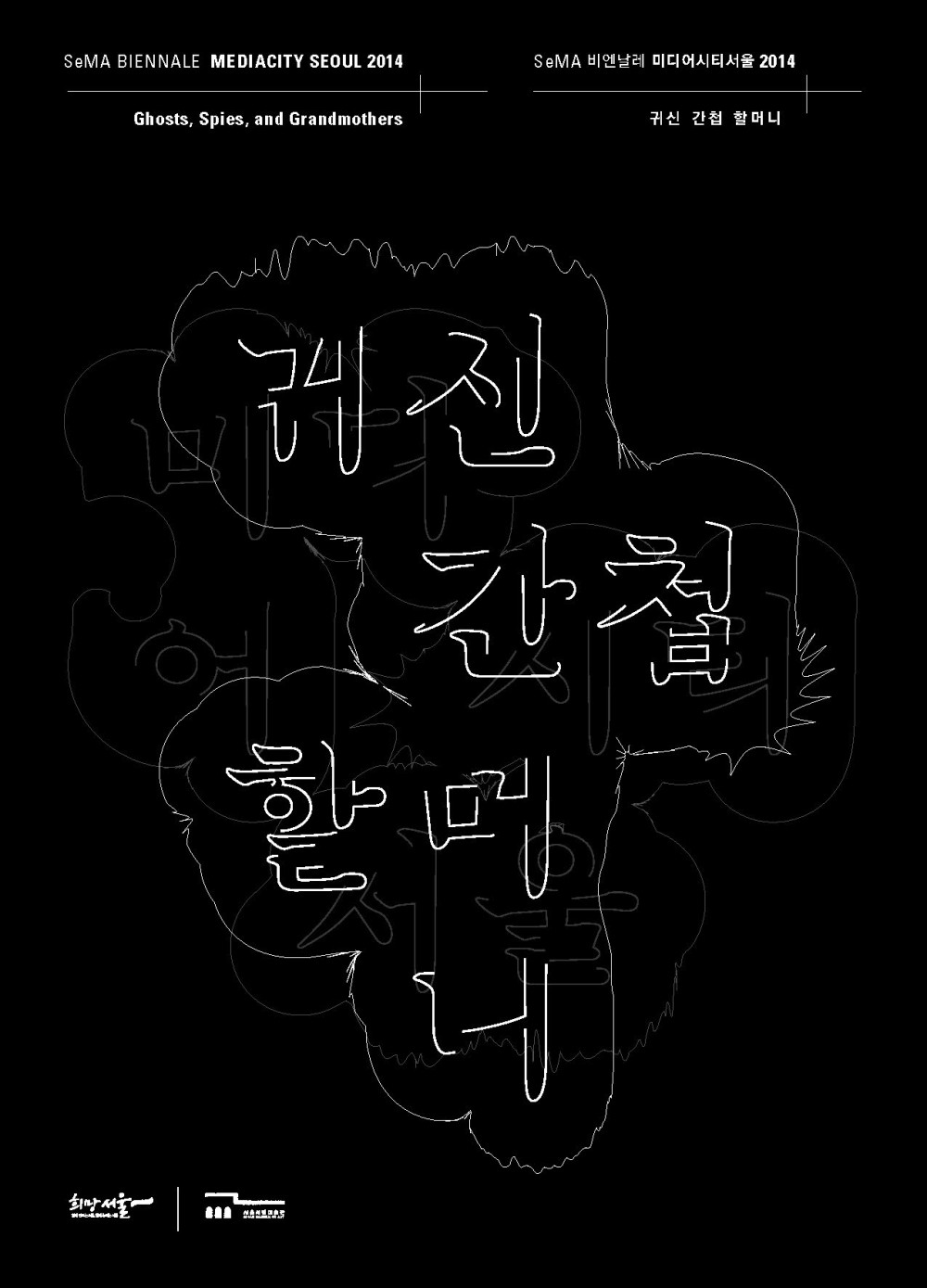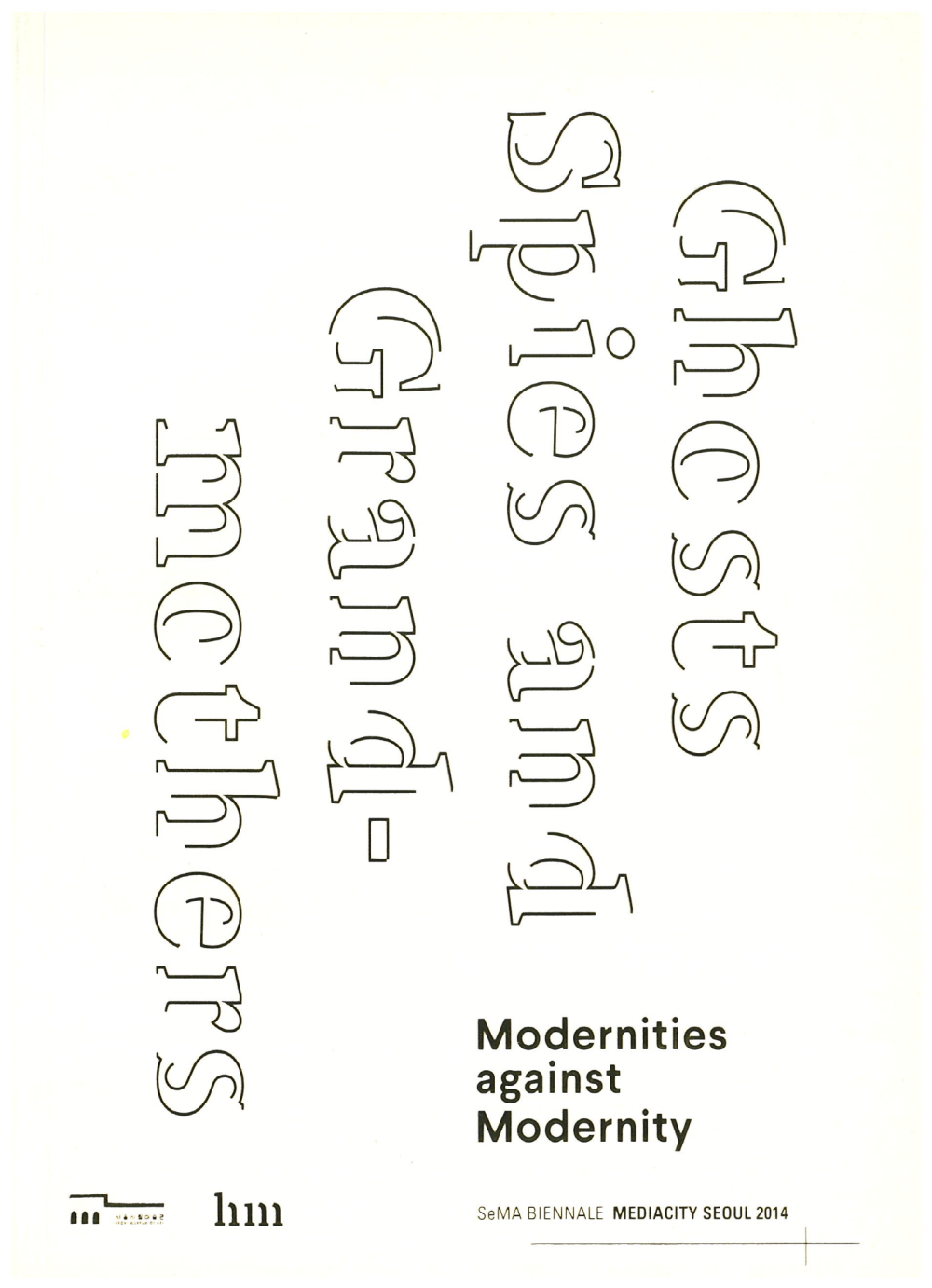
It is characteristic of television to be used as an accompanying moving background to other activities―eating, doing all kinds of housework, waiting―all these activities can be accompanied by adulling, monotonous temporality. Zapping, in turn, can modify the rhythms created by TV programming itself. Sean Snyder’s 2007 single channel video Schema (Television) is an intricate montage of seemingly disparate TV shows, from weather forecasts to cooking shows and political events, with some animals thrown in; none is on view for more than a few seconds. While the piece can be read a critique of the relentless formatting of television and its reduction of news to entertainment, this quite generic critique only becomes effective because of somewhat unsettling flattening of affect that seems to characterize the zapping subject that is performing this impoverished edit. Is there even a subject behind these acts, or just a distended subjectivity modulated by the flow of images?
[Sven Lutticken, History in Motion: Time in the Age of the Moving Image, Sternberg Press, 2013, p.119.]
